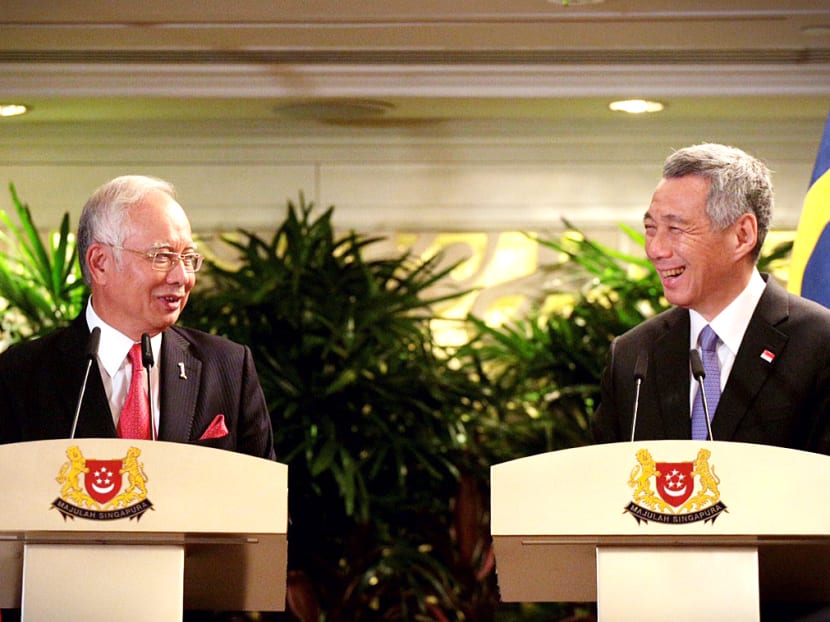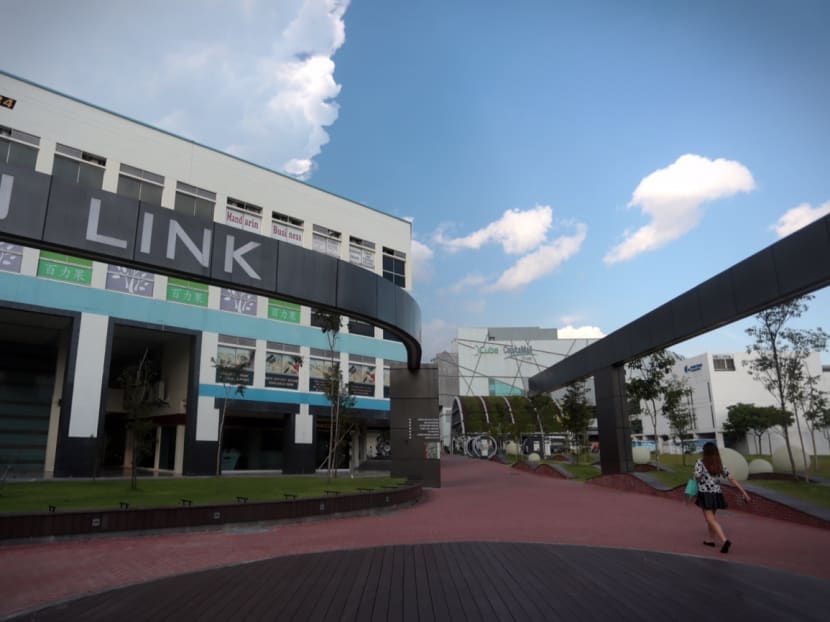High Speed Rail terminus to be located in Jurong East
SINGAPORE — The High Speed Rail linking Singapore and Kuala Lumpur will terminate in Jurong East but the highly-anticipated project will not be completed by the original target of 2020, Prime Minister Lee Hsien Loong said today (May 5) after an annual retreat with his Malaysian counterpart Najib Razak.


SINGAPORE — The High Speed Rail linking Singapore and Kuala Lumpur will terminate in Jurong East but the highly-anticipated project will not be completed by the original target of 2020, Prime Minister Lee Hsien Loong said today (May 5) after an annual retreat with his Malaysian counterpart Najib Razak.
From the design phase to construction, the entire process could take seven years, and Mr Lee suggested that the project — which has been dubbed as a “game changer” by both leaders — could be ready a couple of years after the initial target.
Both countries could work out an agreement and announce a new timeline for the project by the end of the year.
Speaking at a joint press conference with Mr Najib at the Shangri-La hotel, Mr Lee said that given the complexity of the project and the need to “do it well”, the original timeline was “not really a realistic one”. Nevertheless, progress on the project, which would reduce travel times between Kuala Lumpur and Singapore — which are about 350km apart — to 90 minutes, is steady despite many details to work out.
Mr Najib said the design phase could take about a year, the tender process another year, and construction of the high speed rail could take five years. Malaysia had previously announced that its high speed rail terminus would be sited in Sungai Besi and there would be seven stations in total on its side.
Locating the Singapore terminus of the high speed rail in Jurong East would fit plans for the area, which is already a regional centre and is set to become the country’s second Central Business District, said Mr Lee. Three to four MRT lines, including the future Jurong Region Line, will eventually connect Jurong East with the rest of Singapore. Having the terminus “will change the face of Jurong and create opportunities for our citizens and businesses, and draw the people of Singapore and Malaysia closer together”, he said.
The high speed rail will add to the redevelopment of the Jurong Lake District, which includes the Chinese and Japanese Gardens, Mr Lee added.
Locating the terminus in the city centre would be the most costly and challenging from an engineering standpoint. There are also space constraints above- and below-ground, Mr Lee said. Tuas, on the other hand, is an industrial area and “quite far away from the city centre”.
Asked about the project’s complexity, Mr Lee said details such as financing, the company or companies that will operate the system and how they will be structured, as well as contingency arrangements, will need to be worked out.
Cross-border rail systems already exist in other parts of the world, but “we have to discuss and apply our minds and decide what is best for our circumstances”, he said. “Papers have to be written, and consensus reached. (And) after considering all relevant factors, to make sure that the project runs well. So, I don’t see them as insoluble problems. We’re getting there, we just need a bit more time to work at it.”
The Singapore terminus location did not surprise analysts, who said a seven-year timeframe for the project is technically feasible.
Dr Ooi Kee Beng, Deputy Director of the Institute of Southeast Asian Studies, said: “Politically, there may be things that need to be ironed out along the way. These would be more due to the pressure that the United Malays National Organisation and Barisan Nasional leadership in Malaysia is facing, and the uncertainties that follow from it.”
Transport expert Lee Der Horng of the National University of Singapore said the “most time-consuming part is what’s happening now – the negotiations between the two governments, especially on the finance part”.
Professor Lee said international tenders jointly called by both governments would make more sense for the project, and construction could take as little as two-and-a-half years. An above-ground terminus would be faster and less costly to build, he added. “Engineering-wise, I do not see any major difficulty because we have a lot of experienced operators and builders around the world. The Chinese, Japanese and Europeans are all familiar with high speed rail (projects).”
A joint statement by both Prime Ministers said agreements have been reached on the dual co-located customs, immigration and quarantine configuration for the project, as well as frequency bands to be reserved for operations. The depot and stabling facilities in Malaysia have also been agreed on.
On the proposed Rapid Transit System connecting Johor Baru and Woodlands, Mr Najib said he hopes to move into the second phase of the project to look at the technical and financial options.
The leaders, each accompanied by several ministers, said bilateral ties are good. Other issues discussed yesterday include reducing congestion at the Causeway and the completion of the Johor River Barrage to ensure reliable water supply from the river. They will meet next year in Malaysia and Mr Najib said the location has not been decided. “But we’ll make it exciting,” he quipped.






